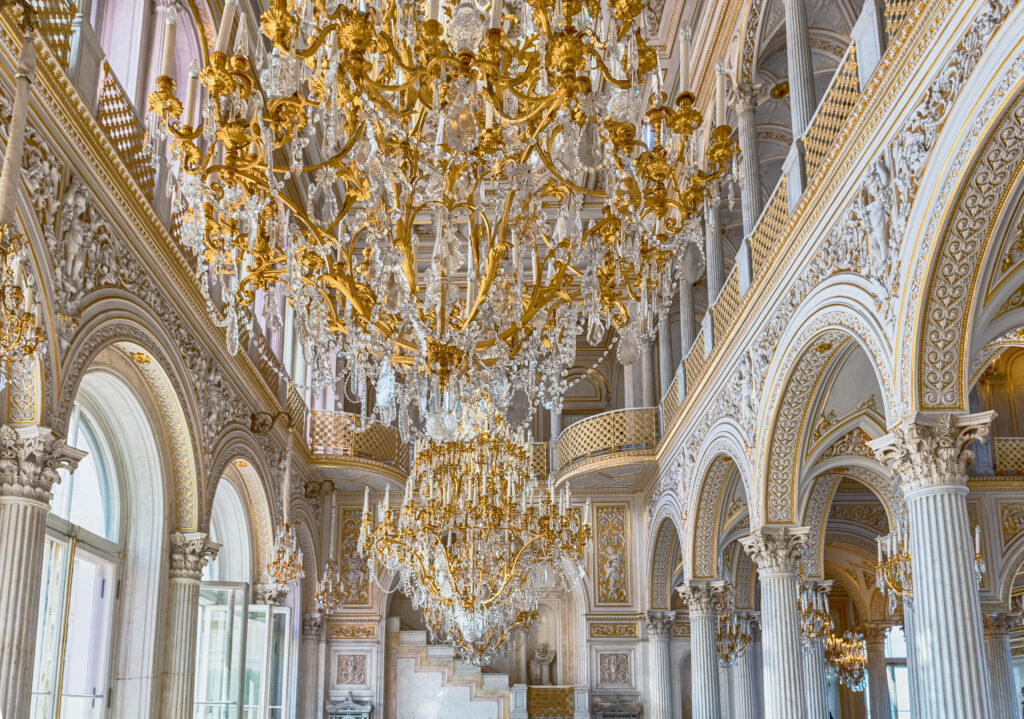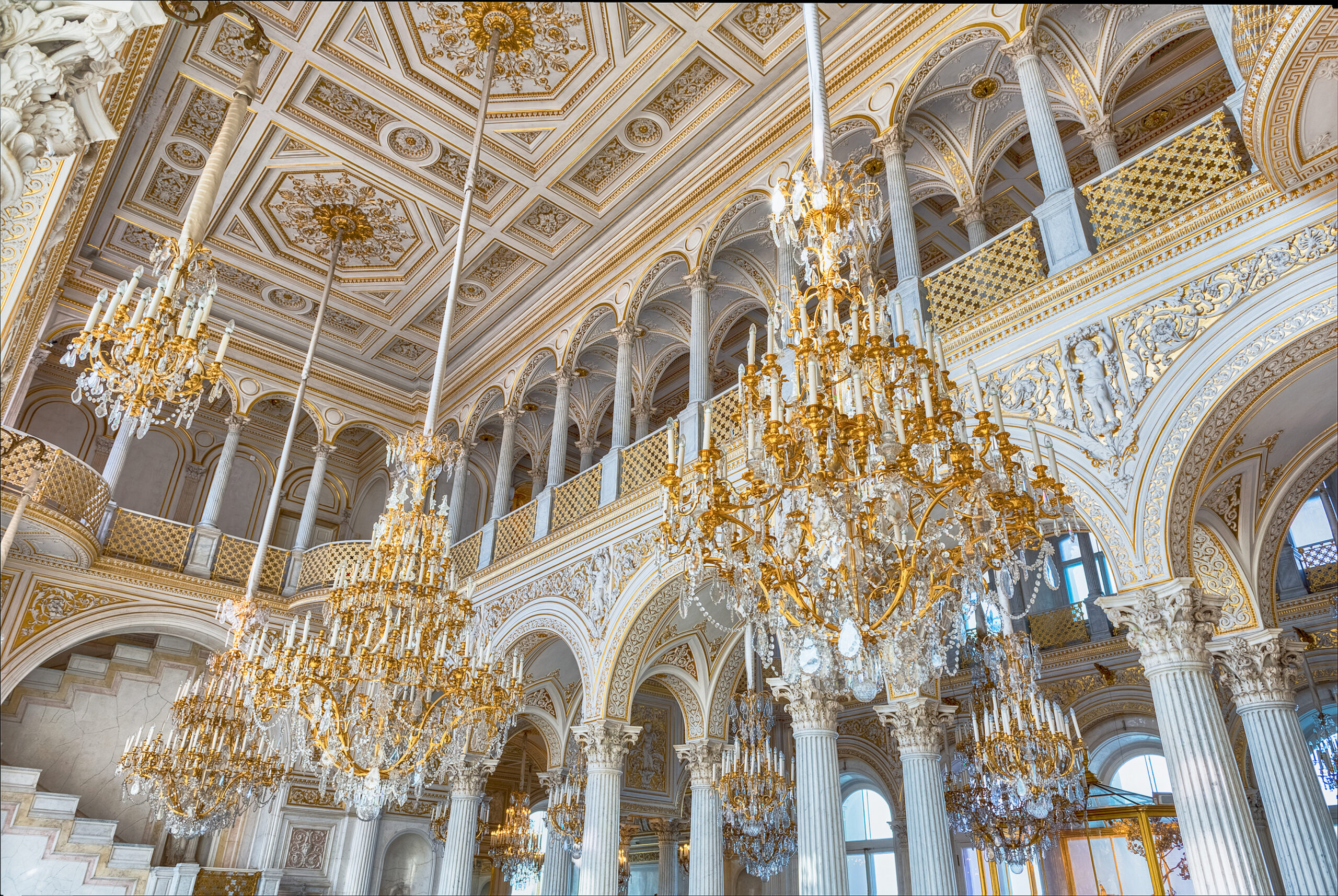Nestled within the expansive walls of the State Hermitage Museum in St. Petersburg, Russia, lies an architectural masterpiece that epitomises the grandeur and opulence of the Russian Imperial era: The Pavilion Hall of the Small Hermitage. This magnificent space, adorned with intricate frescoes, majestic columns, and a breathtaking dome, serves as a beacon of artistic and cultural heritage, drawing visitors from around the world to marvel at its beauty and splendour. At the heart of this hall hang 28 chandeliers, crafted from the finest crystal and brass, each a testament to the craftsmanship and artistry of a bygone era.
The history of the Pavilion Hall dates back to the early 19th century when Russia was under the reign of Emperor Alexander I. It was during this time of cultural enlightenment and artistic revival that the decision was made to expand the Hermitage Museum, transforming it into a showcase of Russian art and culture. Renowned architect Leo von Klenze was commissioned to design the Pavilion Hall, along with other architectural gems within the museum complex, including the Winter Palace.
Construction of the Pavilion Hall began in 1819 and was completed in 1829, marking a significant milestone in the history of Russian architecture. The hall was designed to serve as a transitional space connecting the Winter Palace to the Small Hermitage, providing visitors with a grand entrance befitting the splendour of the museum’s collection. Its neoclassical design, characterised by symmetrical proportions, Corinthian columns, and a soaring dome, reflected the prevailing architectural trends of the time while incorporating elements of Russian tradition and grandeur.

Central to the beauty and allure of the Pavilion Hall are its 28 chandeliers, suspended from the dome above like shimmering jewels adorning a crown. Each chandelier is a masterpiece of design and craftsmanship, meticulously crafted from crystal and brass to create a dazzling display of light and elegance. The history of these chandeliers is as rich and storied as the hall itself, tracing their origins to the workshops of Europe’s finest artisans.
The chandeliers were commissioned by Empress Catherine the Great in the late 18th century as part of her ambitious efforts to adorn the newly constructed Winter Palace with luxurious furnishings and decorations. Drawing inspiration from the opulent courts of Europe, Catherine spared no expense in acquiring the finest crystal and brass to create chandeliers that would rival those found in the palaces of Vienna and Versailles.
The chandeliers were crafted by skilled artisans from across Europe, including Bohemia, France, and Italy, who brought centuries of tradition and expertise to bear on their creation. Each chandelier was handcrafted using time-honoured techniques passed down through generations, from the delicate cutting and polishing of the crystal to the intricate casting and engraving of the brass components.

Over the centuries, the Pavilion Hall and its magnificent chandeliers have borne witness to the ebb and flow of history, surviving wars, revolutions, and the passage of time. Despite the challenges and upheavals that have befallen Russia, the Hermitage Museum has remained a steadfast guardian of its cultural heritage, preserving and protecting its treasures for future generations to admire and appreciate.
Today, the Pavilion Hall continues to enchant visitors with its timeless beauty and historical significance, serving as a symbol of Russia’s rich artistic and cultural legacy. The chandeliers, with their sparkling crystal and intricate brass work, remain a testament to the craftsmanship and ingenuity of those who created them, their radiance casting a luminous glow upon the hall and illuminating the path to Russia’s glorious past.
In conclusion, the Pavilion Hall of the Small Hermitage stands as a testament to the enduring legacy of Russian art and architecture, a beacon of beauty and inspiration that continues to captivate and enthral all who enter its hallowed halls. And at the heart of this architectural marvel lie the 28 chandeliers, silent witnesses to the grandeur of a bygone era, their brilliance serving as a reminder of Russia’s rich cultural heritage and artistic achievement.




 No products in the basket.
No products in the basket. 
